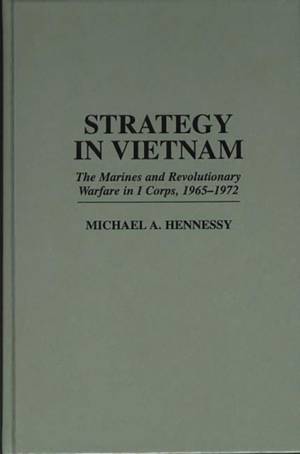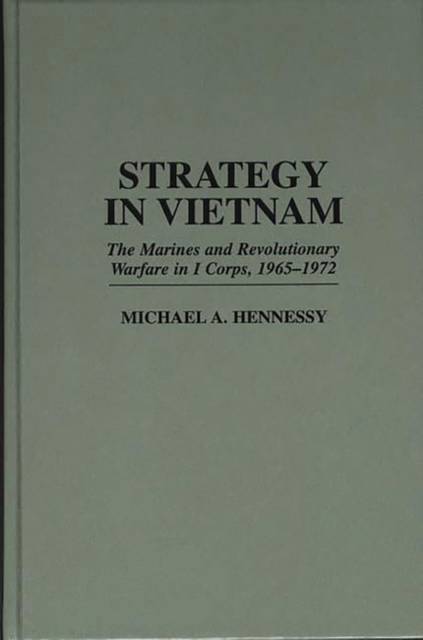
- Afhalen na 1 uur in een winkel met voorraad
- Gratis thuislevering in België vanaf € 30
- Ruim aanbod met 7 miljoen producten
- Afhalen na 1 uur in een winkel met voorraad
- Gratis thuislevering in België vanaf € 30
- Ruim aanbod met 7 miljoen producten
Zoeken
Strategy in Vietnam
The Marines and Revolutionary Warfare in I Corps, 1965-1972
Michael A Hennessy, Hennessy
€ 110,45
+ 220 punten
Omschrijving
Grand strategy, strategy, and tactics--the three layers of policy and action inherent to all military efforts--are the focus of this historical analysis of the dynamics of the Vietnam War. The American theory of counterrevolutionary warfare is examined in light of American military practice, especially that of the Marine Corps, during the period of America's greatest involvement, 1965-1972, and at the site of the most intense combat, the five northern provinces known as I Corps. Drawing from two schools of thought that diverge over the appropriate strategy America should have pursued in South Vietnam, this inquiry indicates that both the number of troops and their tactical employment proved inadequate for redressing the threat within the parameters America set for itself. Specifically, this work demonstrates that the counterrevolutionary warfare strategy postulated for Vietnam was largely ignored in some quarters, and sowed the seeds of defeat in others.
Specificaties
Betrokkenen
- Auteur(s):
- Uitgeverij:
Inhoud
- Aantal bladzijden:
- 232
- Taal:
- Engels
- Reeks:
Eigenschappen
- Productcode (EAN):
- 9780275956677
- Verschijningsdatum:
- 21/08/1997
- Uitvoering:
- Hardcover
- Formaat:
- Genaaid
- Afmetingen:
- 159 mm x 238 mm
- Gewicht:
- 480 g

Alleen bij Standaard Boekhandel
+ 220 punten op je klantenkaart van Standaard Boekhandel
Beoordelingen
We publiceren alleen reviews die voldoen aan de voorwaarden voor reviews. Bekijk onze voorwaarden voor reviews.











